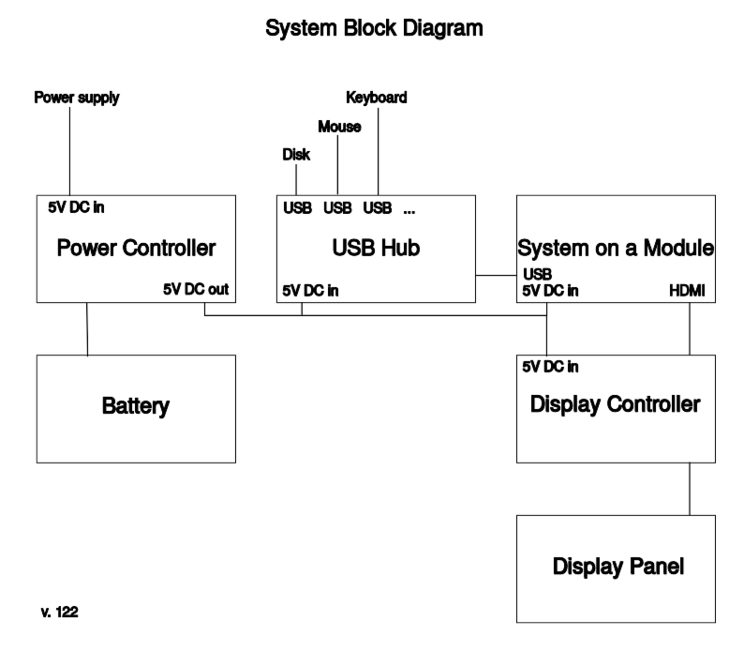Difference between revisions of "Specifications"
| Line 22: | Line 22: | ||
See more: [[System on a Module]] | See more: [[System on a Module]] | ||
| − | ==USB hub== | + | ==I/O USB hub== |
| − | + | IO-board basically means connectivity with peripheral devices. These can be seen as on-board and out-board. On-board devices include: keyboard + trackpad, webcam and optional audio-card. USB is the usual solution for this. | |
| − | + | For more see our [[I/O USB]] page. | |
==Display Controller and panel== | ==Display Controller and panel== | ||
Revision as of 07:16, 18 May 2020
This page documents features from more engineering point of view. For a more user-centric point of view, see Features.
Major Balthazar parts are:
Power Controller and battery
These supply power to the rest of the system, particularly the System on a Module, USB Hub and Display subsytem. It also manages battery.
It should be capable enough to run some USB connected hardware.
See more: Power Supply
System on a Module (SoM)
This is the main system board, the computer. Boards from different makers should be supported.
Minimum of ports is required for wider compaitibility. These are: Power, USB and HDMI.
See more: System on a Module
I/O USB hub
IO-board basically means connectivity with peripheral devices. These can be seen as on-board and out-board. On-board devices include: keyboard + trackpad, webcam and optional audio-card. USB is the usual solution for this.
For more see our I/O USB page.
Display Controller and panel
Provides interface to display panel by HDMI
Case
Keyboard and Touch-pad
See more: Keyboard
Software
Software depends on a System on a Module used.
See more: Software
